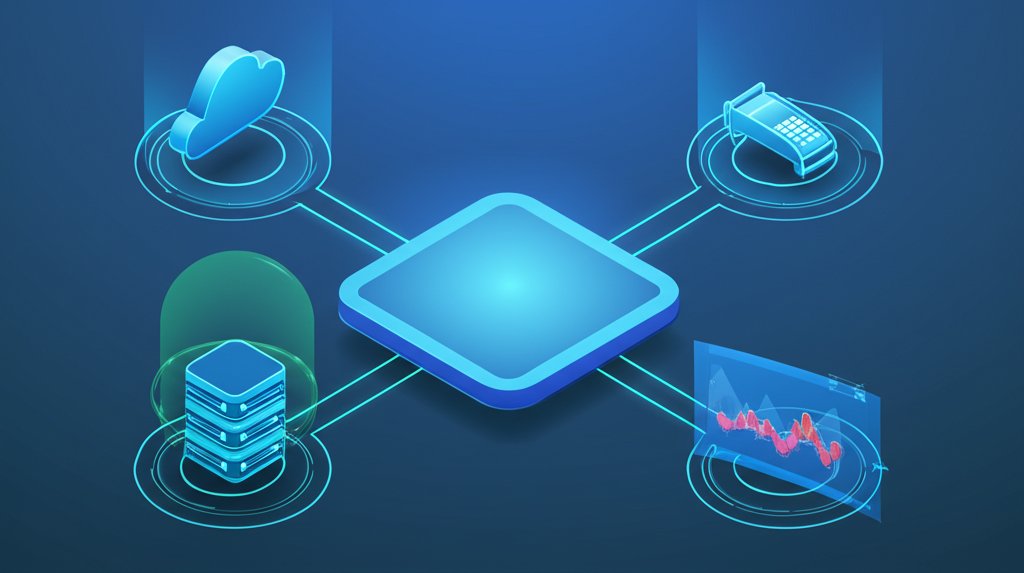Serverless Security Made Simple: A Small Business Guide to Protecting Your Cloud Apps
Welcome to the era of serverless computing! For small businesses like yours, this isn’t just a technological trend; it’s a strategic accelerator, offering unprecedented agility, cost savings, and the ability to innovate faster than ever before. But with this increased power comes a critical responsibility: securing your digital assets. As you leverage the cloud to drive growth, you’re likely asking: “Is my data truly safe?” or “Who’s ultimately responsible for my application’s security?” We understand that navigating the technical intricacies of cloud security can feel daunting, but mastering your serverless security doesn’t have to be a bewildering ordeal.
This comprehensive guide is your plain-language roadmap to safeguarding your modern cloud applications. We’re here to cut through the complexity, translating potential threats into clear, actionable advice that empowers you to take control. Our goal is to ensure your serverless journey not only propels your business forward but also remains impeccably secure, protecting your invaluable data, maintaining customer trust, and ensuring your uninterrupted growth. You don’t need to be a cybersecurity expert to understand and implement these vital safeguards. Let’s equip you with the knowledge to thrive securely in the cloud.
Table of Contents
- What is serverless computing, and why is its security non-negotiable for small businesses?
- How does the “shared responsibility model” work in serverless, and what am I responsible for?
- What are the most common serverless security risks for small businesses?
- How can I secure access to my serverless applications and data?
- What does data encryption mean for my serverless apps, and why is it important?
- How can I keep an eye on what’s happening in my serverless environment?
- What are “least privilege” and “input validation,” and why are they crucial?
- How do I ensure my application’s code itself is secure in a serverless setup?
- What is “secrets management” and why shouldn’t I hardcode sensitive information?
- What should I do if a security incident happens with my serverless applications?
- Are there specific cloud provider security features that can help small businesses?
- How can small businesses stay ahead of new serverless security threats?
What is serverless computing, and why is its security non-negotiable for small businesses?
For small businesses embracing serverless computing, security isn’t just an IT concern—it’s a critical factor for sustained growth, customer trust, and competitive advantage. Ignoring serverless security can quickly transform its benefits into serious liabilities, leading to data breaches, unauthorized access to your operations, and significant financial and reputational damage. Your ability to innovate and scale securely hinges on understanding and mitigating these risks from the outset.
So, what exactly is ‘serverless computing’? Imagine running your application code without the constant headache of managing servers. It’s like opting for a taxi service instead of buying and maintaining your own car: you get where you need to go, paying only for the exact distance traveled and the resources consumed, without worrying about fuel, maintenance, or parking. For small businesses, this translates to reduced operational costs, automatic scalability to handle fluctuating demand, and significantly less maintenance hassle, freeing up your team to focus on core business objectives.
However, this shift in infrastructure fundamentally changes your security responsibilities. While your cloud provider secures the underlying platform, the security of your applications, data, and configurations rests squarely on your shoulders. Protecting your digital assets in this modern environment isn’t just about compliance; it’s about safeguarding your future.
How does the “shared responsibility model” work in serverless, and what am I responsible for?
The shared responsibility model is a cornerstone of cloud security, clearly defining who secures what. In serverless environments, your cloud provider (like AWS, Azure, or Google Cloud) is responsible for the security of the cloud – meaning the physical infrastructure, network, and the underlying serverless platform itself. They keep the building secure and the core services running reliably.
However, you, as the small business owner or user, are responsible for security in the cloud. This includes securing your application code, managing configurations, protecting your data (both when it’s stored and when it’s moving), setting up identity and access management, and configuring network controls for your applications. Think of it this way: the cloud provider secures the building, but you are responsible for what you put inside, how you arrange it, and who gets the keys. Your proactive measures are critical to preventing vulnerabilities and protecting your valuable business data from cyber threats.
What are the most common serverless security risks for small businesses?
For small businesses, several common serverless security risks can lead to serious issues, often stemming from oversights or simple misconfigurations. One major risk is misconfigured settings, such as accidentally leaving cloud storage buckets publicly accessible. This can expose sensitive data to anyone on the internet, turning a private asset into a public liability.
Another pitfall is weak access controls, where users or applications are granted more permissions than they actually need to perform their tasks. This creates unnecessary entry points for attackers. We also frequently see data exposure through insecure storage or transmission without proper encryption. Furthermore, using unsafe third-party tools or libraries can introduce vulnerabilities if they’re not kept updated or properly vetted. Lastly, input vulnerabilities occur when your application doesn’t properly validate incoming data, allowing malicious input to cause harm. These aren’t just abstract technical problems; they are direct threats to your business’s operational stability, reputation, and financial well-being.
How can I secure access to my serverless applications and data?
Securing access to your serverless applications and data is akin to fortifying your digital “front door,” and it’s paramount for protecting your business. You must start by implementing strong authentication for anyone accessing your cloud services, meaning unique, complex passwords combined with multi-factor authentication (MFA). MFA adds an essential layer of security, making it exponentially harder for unauthorized individuals to gain entry, even if they manage to obtain a password.
Beyond individual users, you must also limit the permissions granted to your serverless functions and other cloud services. This is known as the “principle of least privilege”—only give the absolute minimum access necessary for a task. For example, if a serverless function only needs to read data from a specific storage location, it should never have permission to delete or modify anything there. Regularly review these permissions to ensure they remain appropriate and haven’t expanded beyond necessity. It’s about ensuring only authorized users and services have the exact keys they need, and no more.
What does data encryption mean for my serverless apps, and why is it important?
Data encryption is like scrambling your valuable information into an unreadable code so that only authorized parties with the correct digital key can decipher it. For serverless applications, it’s crucial to encrypt data in two main states: at rest and in transit. Data “at rest” refers to information stored in databases, file systems, or cloud storage; encrypting it means that even if an attacker gains unauthorized access to your storage, they’ll find only meaningless gibberish, not your sensitive data.
Data “in transit” means information moving between different parts of your application, or between your application and users. Encrypting this data, typically using secure protocols like HTTPS, ensures that it can’t be intercepted and read by malicious actors as it travels across networks. Encryption is a fundamental safeguard against data breaches, protecting sensitive customer information, financial records, and proprietary business data from unauthorized exposure. This is vital not just for maintaining trust with your customers but also for meeting regulatory compliance requirements.
How can I keep an eye on what’s happening in my serverless environment?
Keeping a watchful eye on your serverless environment is essential for the early detection of suspicious activities and for understanding the health and behavior of your applications. This involves two key practices: monitoring and logging. Monitoring means using tools to observe your applications in real-time, looking for unusual patterns, performance anomalies, or unauthorized access attempts. It’s like having a security guard actively patrolling your digital premises, ready to spot anything out of place.
Logging, on the other hand, is about keeping detailed records of every significant event that occurs within your serverless functions and associated services. These logs are invaluable for auditing, troubleshooting, and especially for thoroughly investigating a security incident if one occurs. Think of logs as the comprehensive security camera footage and incident reports for your digital operations. Setting up automated alerts based on this monitoring data and logs ensures you’re immediately notified if something out of the ordinary is detected, allowing for a swift response before minor issues escalate into major security incidents. This proactive approach is a cornerstone of robust serverless security.
What are “least privilege” and “input validation,” and why are they crucial?
“Least privilege” and “input validation” are fundamental cybersecurity concepts that become even more critical in serverless environments due to their granular nature, often forming cornerstones of a Zero Trust security model. Least privilege means granting users, applications, or services only the minimum necessary permissions to perform their specific tasks. For example, a serverless function designed solely to add new customer entries to a database should never have the ability to delete existing customer data. Adhering to this principle drastically reduces the potential damage an attacker can inflict if they manage to compromise a part of your system, as their access will be severely limited.
Input validation is the process of rigorously checking all data that enters your application to ensure it’s legitimate, safe, and in the expected format before it’s processed. Imagine an online form asking for an email address; input validation ensures that the submitted data actually looks like an email and doesn’t contain malicious code or unexpected characters. Without it, attackers can inject harmful commands or unexpected data, leading to common vulnerabilities like injection attacks or application crashes. Both practices are crucial because they prevent malicious actions from both inside and outside your system, forming strong defensive layers for your serverless applications.
How do I ensure my application’s code itself is secure in a serverless setup?
Ensuring your application’s code is secure in a serverless setup requires vigilance throughout its development and deployment lifecycle. First, make sure you’re consistently updating all components and third-party libraries your application uses. Outdated components are a common source of known vulnerabilities, and patching them promptly closes these security gaps.
Next, integrate automated code scanning tools into your development process. These tools can automatically analyze your code for security flaws and weaknesses before it even goes live. It’s like having an automated quality control check specifically for security. Additionally, make security testing a regular and thorough part of your development lifecycle. This includes looking for common vulnerabilities, testing how your application handles unexpected inputs, and ensuring that all security controls are working as intended. Remember, even with the cloud provider securing the infrastructure, your code is your responsibility. Proactive measures during development, including a robust API security strategy, significantly reduce your attack surface and protect your serverless functions from common exploits.
What is “secrets management” and why shouldn’t I hardcode sensitive information?
Secrets management refers to the practice of securely storing and managing sensitive information like API keys, database credentials, encryption keys, and passwords, completely separate from your application’s code. It’s about keeping the “keys to the kingdom” under lock and key, rather than leaving them lying around for anyone to find. Hardcoding sensitive information directly into your application’s source code is a major security no-no because it makes these secrets easily discoverable. If your code repository is ever compromised, or if a developer accidentally exposes the code, all your hardcoded secrets become instantly available to attackers.
Instead, serverless applications should retrieve secrets dynamically from dedicated, secure services offered by cloud providers (like AWS Secrets Manager, Azure Key Vault, or Google Secret Manager) or robust third-party solutions. This approach ensures your secrets are encrypted, access is strictly controlled, and they can be rotated regularly without requiring changes to your application code. It’s a critical step in preventing unauthorized access to your databases, APIs, and other vital services, greatly enhancing your overall cloud application security.
What should I do if a security incident happens with my serverless applications?
Even with the best precautions, security incidents can occur, so having a plan in place is absolutely crucial. If you suspect or confirm a security incident with your serverless applications, the first step is to execute a pre-defined incident response plan. This plan should clearly outline who to contact (e.g., your IT consultant, cloud provider support, legal team), what immediate steps to take (like isolating the affected application or taking it offline to prevent further damage), and how to thoroughly document everything that happened.
Additionally, regularly backing up your important data is a non-negotiable step. If data is compromised, encrypted by ransomware, or accidentally deleted, a recent, verified backup can be your lifeline for recovery. Your plan should also include clear procedures for restoring services from these backups. Remember, a swift, organized, and rehearsed response can significantly minimize the impact of an incident, protecting your business from prolonged downtime, irreversible data loss, and severe reputational harm. Being prepared isn’t just good practice; it’s essential business resilience.
Are there specific cloud provider security features that can help small businesses?
Absolutely! Major cloud providers offer a robust suite of built-in security features that small businesses can leverage without needing deep technical expertise. These services are often integrated seamlessly with your serverless applications. Key features include advanced identity and access management (IAM) systems, which help you precisely control who can access your cloud resources and exactly what actions they can perform. They are vital for implementing the “least privilege” principle we discussed earlier.
Cloud providers also offer managed encryption services to protect your data at rest and in transit, often with just a few clicks. Their comprehensive monitoring and logging dashboards (like AWS CloudWatch, Azure Monitor, Google Cloud Logging) provide invaluable insights into application activity, security events, and potential threats, allowing you to set up automated alerts for suspicious behavior. Additionally, services like Web Application Firewalls (WAFs) can protect your API Gateways from common web exploits. By learning about and utilizing these native security tools, small businesses can significantly enhance their serverless security posture, often at a lower cost and with less complexity than managing separate third-party solutions.
How can small businesses stay ahead of new serverless security threats?
Staying ahead of new serverless security threats is an ongoing commitment, not a one-time setup. For small businesses, it involves continuous vigilance and adaptation. Firstly, prioritize ongoing education for yourself and your team. Regularly review cybersecurity best practices and stay informed about emerging threats specific to serverless architectures through reputable cybersecurity blogs and resources. Cloud providers constantly release updates and new security features, so keep an eye on their announcements and apply relevant patches and configurations promptly.
Consider periodic security assessments or consultations with a cloud security expert who can identify potential weaknesses unique to your specific serverless setup. You should also foster a security-first mindset within your organization, encouraging everyone to be aware of phishing risks, use strong passwords and MFA, and report anything suspicious. Remember, serverless is powerful, but its security requires active participation. By treating security as an evolving process, you can continually strengthen your defenses and adapt to the ever-changing landscape of cyber threats, safeguarding your business for the long term.
Related Questions
- What are the immediate steps a small business can take to improve serverless security today?
- How often should I review my serverless security settings and configurations?
- Can serverless applications be more secure than traditional server-based applications?
- What role does a Web Application Firewall (WAF) play in serverless security?
- How can I find a trusted IT consultant to help with my serverless security?
Conclusion: Protecting Your Serverless Future
Serverless computing offers incredible advantages for small businesses, providing agility, scalability, and cost efficiency. But as we’ve explored, these benefits come with a critical caveat: security is a shared responsibility, and your active participation is paramount. From securing access and encrypting data to diligently monitoring activities and planning for potential incidents, each step you take strengthens your digital defenses.
You don’t need to be a technical guru to implement these vital safeguards. This guide has broken down complex concepts into understandable, actionable steps, empowering you to protect your cloud applications and valuable data. Your vigilance in applying these practices will not only defend against cyber threats but also foster trust with your customers and ensure the uninterrupted continuity of your business operations.
Now that you’re armed with this knowledge, take the initiative. We encourage you to review your current cloud settings and begin implementing these essential steps. Proactive security today builds a resilient future for your business.









